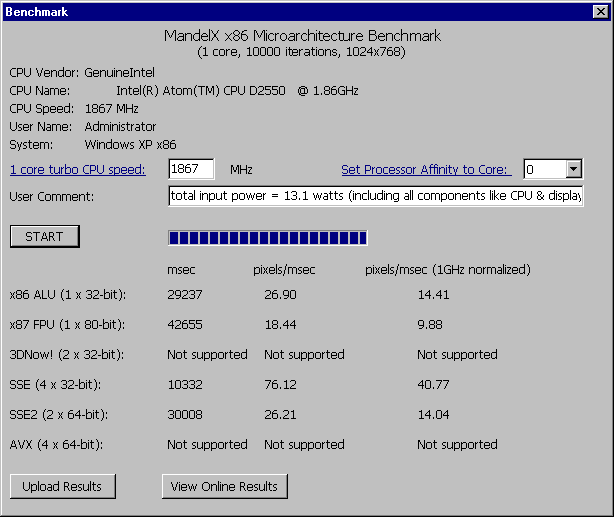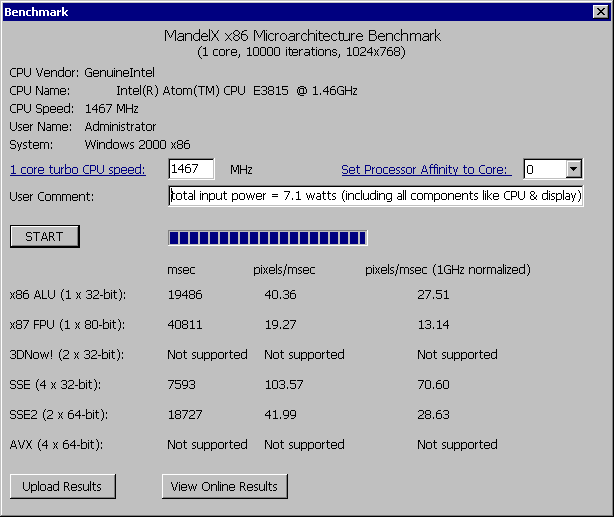Falcosoft wrote on 2025-06-26, 08:27:
BTW, according to Intel the Atom D2550 is not a Bonnell but a Saltwell/Cedarview one:
https://www.intel.com/content/www/us/en/produ … ifications.html
You corrected yourself later but for anyone else wondering, Bonnell refers to the CPU microarchitecture and Saltwell/Cedarview refers to the processor code name (which also includes other aspects like semiconductor process).
Anyway, interestingly Esther (VIA C7) slightly beats Bonnell in SSE2 on this workload, 16 pixels/ms vs 14, the only "win" it has.
The rest of my results are from a NSC Geode GX1 300MHz (FPU_FAST enabled, slowest ALU result), Athlon 5350 (Kabini, slowest AVX), and Athlon 64 X2 5000+. The model names from CPUID (perhaps the DOS version should output this too), including the C7-D, are (from /proc/cpuinfo in Linux):
- VIA Esther processor 1500MHz
- Geode(TM) Integrated Processor by National Semi
- AMD Athlon(tm) 5350 APU with Radeon(tm) R3
- AMD Athlon(tm) 64 X2 Dual Core Processor 5000+

